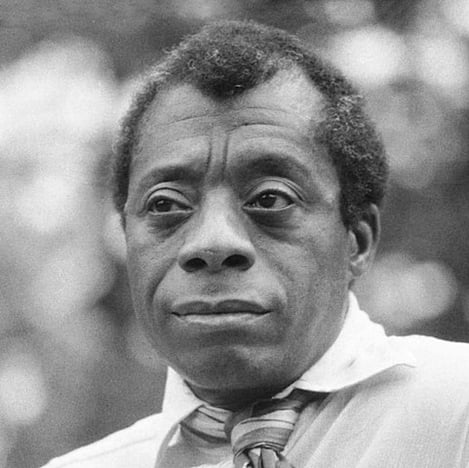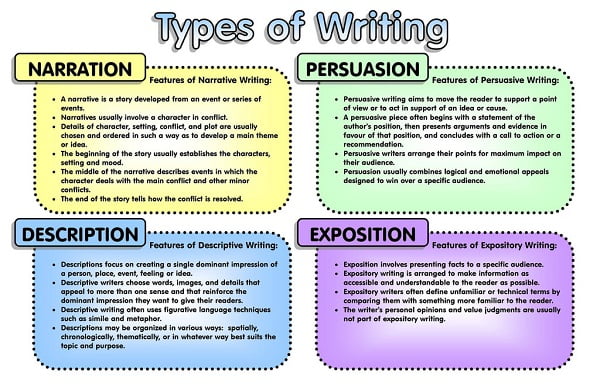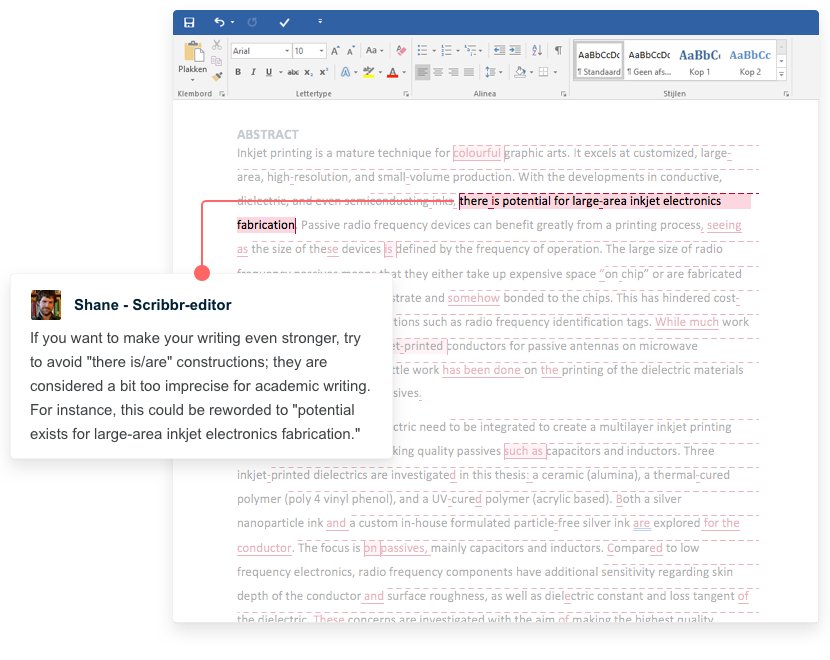
Also, nobody expects you to perfectly recall details that may have happened years ago. You may have to reconstruct dialog from your memory and your imagination. That’s okay, again, as long as you aren’t making it up entirely and assigning made-up statements to somebody.
Try to avoid cliches, as these will feel tired to your readers. Instead of roses to symbolize love, try succulents. Instead of the ocean representing some vast, unknowable truth, try the depths of your brother’s bedroom. Keep your language and motifs fresh and your essay will be even stronger!
A narrative essay is one of the most intimidating assignments you can be handed at any level of your education. Where you've previously written argumentative essays that make a point or analytic essays that dissect meaning, a narrative essay asks you to write what is effectively a story.
With this essay, we can see that you don’t need a big, weird, exciting event to discuss an important meaning. Woolf is able to explore complicated ideas in a short essay by being deliberate about what details she includes, just as you can be in your own essays.
Use Dialog

That’s why first-person perspective is the standard. It keeps you, the writer, close to the narrative, reminding the reader that it really happened. And because you really know what happened and how, you’re free to inject your own opinion into the story without it detracting from your point, as it would in a different type of essay.
In many essays, you’re expected to remove yourself so that your points stand on their own. Not so in a narrative essay—in this case, you want to make use of your own perspective.
Because his father was a hard, uncompromising man, Baldwin struggles to reconcile the knowledge that his father was right about many things with his desire to not let that hardness consume him, as well.
After a time, tired by his dancing apparently, he settled on the window ledge in the sun, and, the queer spectacle being at an end, I forgot about him. Then, looking up, my eye was caught by him. He was trying to resume his dancing, but seemed either so stiff or so awkward that he could only flutter to the bottom of the window-pane

The format of a narrative essay is almost similar to a general essay format:
When it comes to the question of ‘‘how to start a narrative essay’’, the introduction starts with a hook (a leading statement about the story that grabs the attention of the reader). Then you continue with setting the scene: when did the event occur? Where? Under what circumstances? Having the ability to answer these questions will enable the reader to dig deep into the story and will be fascinated by it until the end. The introduction ends with a thesis statement that lets the reader know the truths or insightful experience stemming from your story.
In this section, the writer presents his or her thoughts and analysis of the situation and also highlighting the reason why these experiences are important to the readers.
While writing your essay, you need to be driven by passion and utilize concrete details. Narrative writing offers students a great opportunity to score highly by telling a good story with passion, without having to concentrate on areas like persuasive writing and literary analysis.
Key Elements of Good Narrative Essay Examples
- You begin from the introduction, which is supposed to be captivating to capture the reader’s attention.
- Next, you outline your plot in the body.
- Finally, you come up with a conclusion, explaining the lessons learned from that experience and how it can be useful to others.
Selecting a topic may be the most challenging thing to do. Here are a few ideas to assist you to brainstorm topics:
There you have it. For those students bothered with questions such as “what is a narrative essay” or “what is narrative writing” the information provided above will assist you to know what a narrative essay, as well as descriptive essay, is and what is involved in writing it. You are supposed to narrate a story that has a specific point to be made. Your audience has to get a vivid idea or learn a lesson from your paper. Also, make use of emotional language.

Here, Baldwin ties together the themes and motifs into one clear statement: that he must continue to fight and recognize injustice, especially racial injustice, just as his father did. But unlike his father, he must do it beginning with himself—he must not let himself be closed off to the world as his father was. And yet, he still wishes he had his father for guidance, even as he establishes that he hopes to be a different man than his father.
In this essay, Baldwin loads the front of the essay with his motifs, and, through his narrative, weaves them together into a theme. In the end, he comes to a conclusion that connects all of those things together and leaves the reader with a lasting impression of completion—though the elements may have been initially disparate, in the end everything makes sense.
All of these details feed back into the throughline of East Coast thinking that Wallace introduces in the first paragraph. He also refers back to it in the essay’s final paragraph, stating:
These details can tie into your overall motifs and further your point. Woolf describes in great detail what she sees while watching the moth, giving us the sense that we, too, are watching the moth. In Wallace’s essay, he discusses the sights, sounds, and smells of the Illinois State Fair to help emphasize his point about its strangeness. And in Baldwin’s essay, he describes shattered glass as a “wilderness,” and uses the feelings of his body to describe his mental state.
Develop Strong Motifs

That’s why first-person perspective is the standard. It keeps you, the writer, close to the narrative, reminding the reader that it really happened. And because you really know what happened and how, you’re free to inject your own opinion into the story without it detracting from your point, as it would in a different type of essay.
You can replicate this tactic of introducing seemingly unattached ideas and weaving them together in your own essays. By introducing those motifs, developing them throughout, and bringing them together in the end, you can demonstrate to your reader how all of them are related. However, it’s especially important to be sure that your motifs and clear and consistent throughout your essay so that the conclusion feels earned and consistent—if not, readers may feel mislead.
In the same way that an argumentative essay’s body should support its thesis, the body of your narrative essay should include motifs that support your theme.
However, don’t rely too much on it. Your narrative essay shouldn’t be told through people explaining things to one another

The best kind of story for a narrative essay is one you can use to reflect on a particular theme or lesson, or that takes a surprising turn somewhere along the way.
Don’t worry too much if your topic seems unoriginal. The point of a narrative essay is how you tell the story and the point you make with it, not the subject of the story itself.
A narrative essay is a way of testing your ability to tell a story in a clear and interesting way. You’re expected to think about where your story begins and ends, and how to convey it with eye-catching language and a satisfying pace.
The key difference is that a narrative essay is designed to tell a complete story, while a descriptive essay is meant to convey an intense description of a particular place, object, or concept.
What is a narrative essay for?
Narrative essays are usually assigned as writing exercises at high school or in university composition classes. They may also form part of a university application.
Narrative essay assignments vary widely in the amount of direction you’re given about your topic. You may be assigned quite a specific topic or choice of topics to work with.
If you’re not given much guidance on what your narrative essay should be about, consider the context and scope of the assignment. What kind of story is relevant, interesting, and possible to tell within the word count?
When you are prompted to tell a story about your own life or experiences, a narrative essay is usually the right response.
_1614620637.jpg)
So, why not take advantage of this. In other situations, you may feel like a class theme doesn't relate to any event or memory in your life. When faced with this situation, you can create a fictional story. Another great alternative is checking online for examples of good narrative essay topics.
Narrative writing is essential for students in high school and college. Selecting a narrative essay topic of your narrative essay is one of the most important steps in creating this type of assignment. When you select a topic you are passionate about it helps you write an exceptional and captivating story. Using narrative writing ideas help you to write a more interesting story.
Read also: The 125 Descriptive Essay Topics: The Easiest Way to Create a Descriptive Essay
Connect with our top narrative essay writers and receive a paper sample crafted to your needs.
How to Choose a Narrative Essay Topic?
However, it doesn't end here. After coming up with your personal narrative topic, identify all events and details that you want to include in your paper. Create an outline of how events should occur. This prompts you to create appropriate words narrative papers.
Instead spread out narrative ideas between different paragraphs. Do not create in a clinical manner. Write the same way you would to your friends. Each description and statement should be vivid. After all, it's the only way to get readers fully engaged with your story.
A major difference between narratives and rhetorical essays is that you give the reader vivid descriptions that will allow them to reach a certain conclusion. For you to accomplish this task, your essay should be well structured and contain all necessary components. To guide you on your journey here are a few tips.

